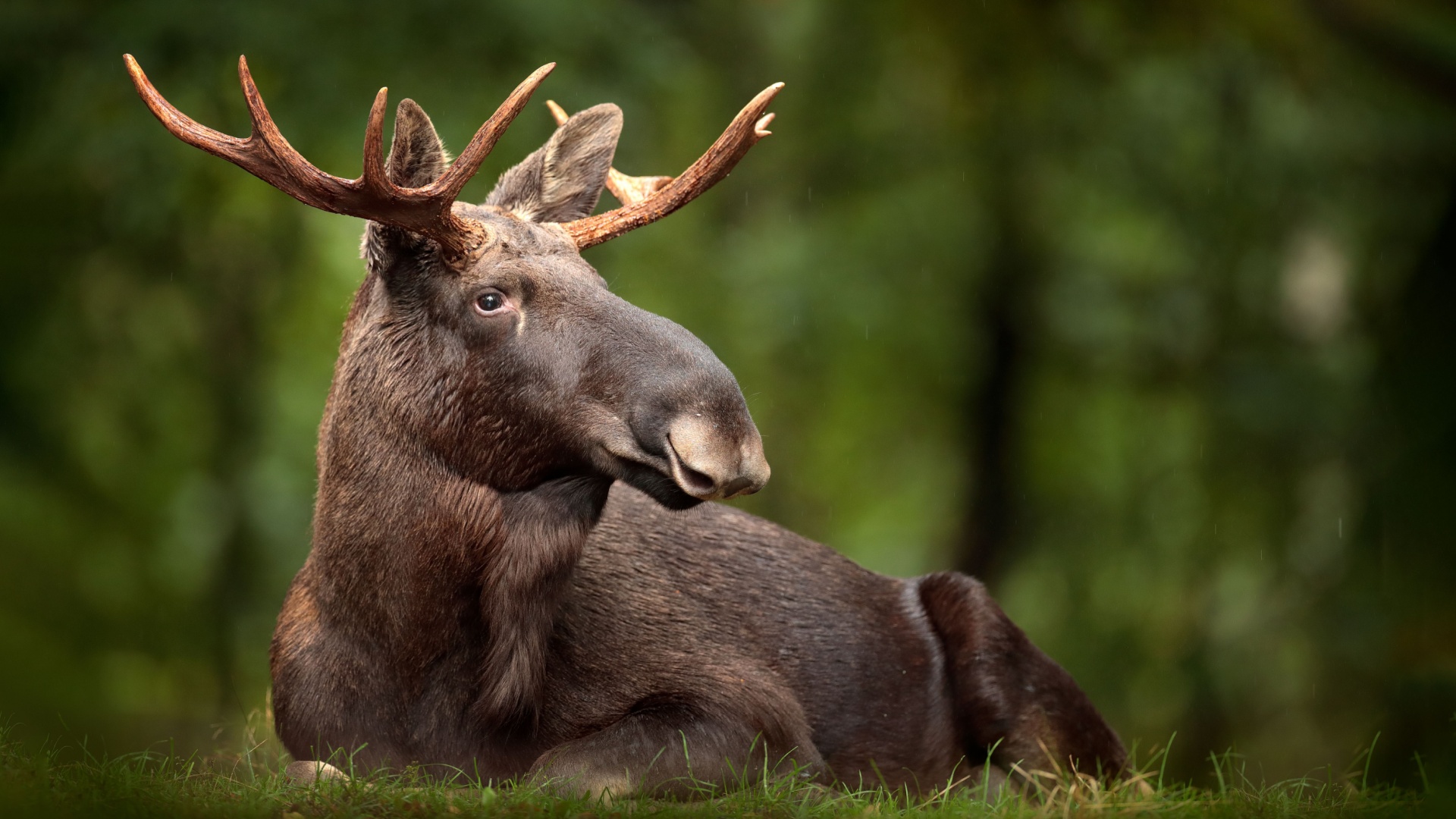Moose are intriguing creatures, standing tall among the giants of the animal kingdom. These majestic animals, often associated with the serene landscapes of North America and Europe, possess a myriad of fascinating characteristics.
From their unique physical features to their unusual behaviors, moose continue to captivate wildlife enthusiasts and casual observers alike.
Whether you’re a wildlife enthusiast or just curious about these majestic animals, here are weird and wonderful facts that showcase why moose are truly one-of-a-kind.
1. Antler Architecture
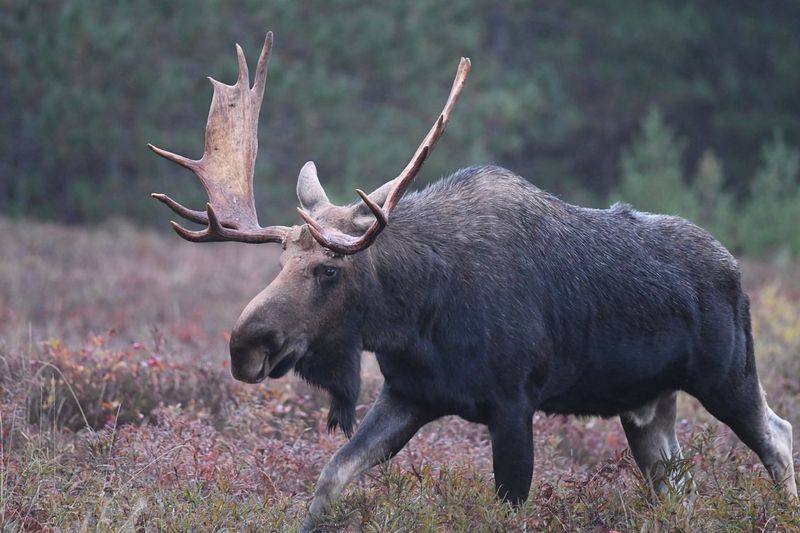
The antlers of a moose are a true marvel of nature. Every year, male moose, or bulls, grow a new set of antlers, shedding the old ones as part of their natural cycle. These antlers are not just for show; they serve essential purposes in the moose’s life. During the mating season, antlers are used in battles against rivals, signaling strength and dominance to potential mates.
The intricate design of a moose’s antlers can span up to six feet wide, making them the largest of any living animal. The growth of these antlers is rapid, at times reaching a rate of nearly an inch a day. This incredible growth is supported by a rich blood supply and is covered in a furry skin called velvet, which nourishes the growing bone.
As the mating season ends, the velvet dries and the antlers become fully hardened, ready for the challenges ahead. Once the season concludes, bulls will naturally shed their antlers, conserving energy for the harsh winter months.
This annual cycle of growth and shedding is a testament to the adaptability and resilience of these magnificent creatures.
2. Moose’s Unique Diet
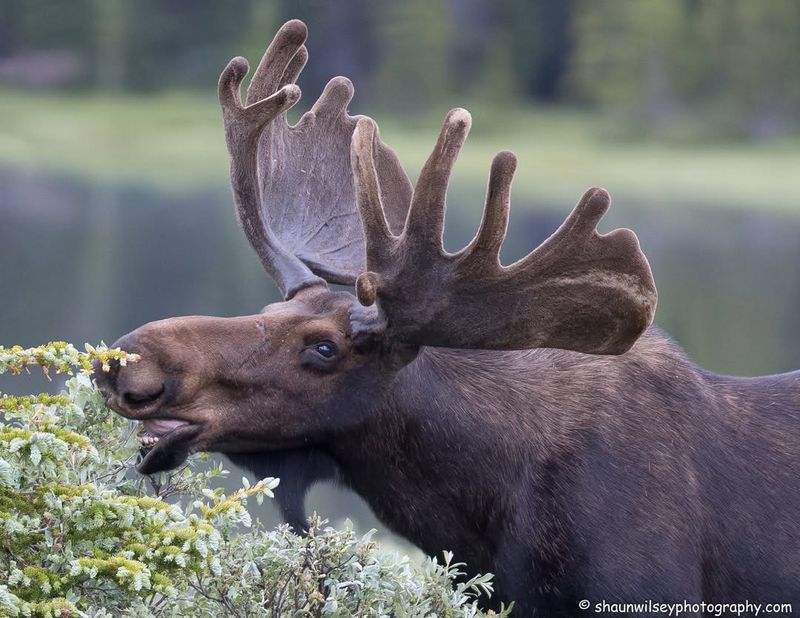
Unlike many other herbivores, moose have a penchant for aquatic vegetation. Their diet is a unique blend of land and water plants, often consuming items like pondweed and water lilies. This distinctive dietary preference allows them to thrive in areas rich in wetlands and forests.
The ability to feed on aquatic plants provides moose with a distinct advantage, offering a reliable food source even in challenging conditions. Their long legs enable them to wade into deeper waters, reaching plants that other animals cannot access. This feeding habit is crucial, especially during the spring and summer months when aquatic plants are abundant.
Moose have a complex digestive system, allowing them to break down tough plant fibers and extract essential nutrients. Their large size requires a substantial amount of food, and their daily intake can reach up to 70 pounds of vegetation. This substantial consumption supports their energy needs and helps maintain their massive bodies through the varying seasons.
3. Solitary Wanderers
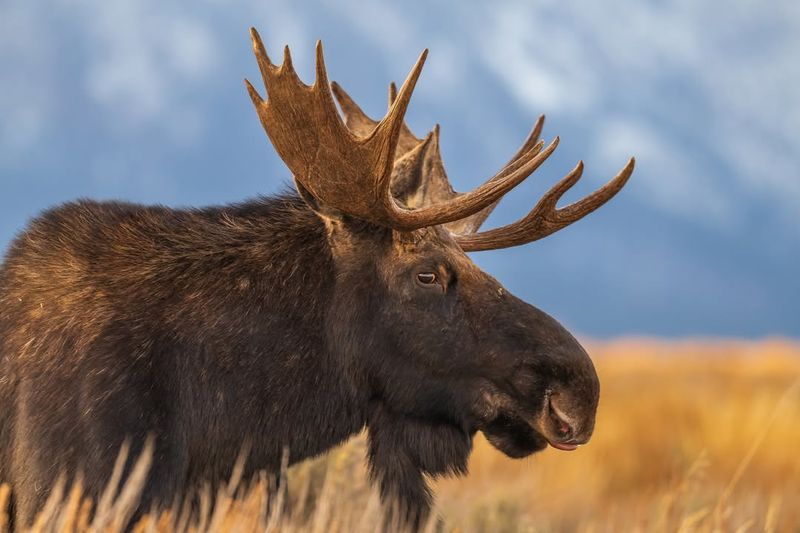
Moose are typically solitary animals, preferring the peace and quiet of their own company. Unlike other members of the deer family, they do not form herds, instead wandering the forests alone. This solitary nature allows them to cover large territories, searching for food and avoiding competition.
Occasionally, moose may be seen together during the mating season, when bulls seek out females for breeding. After this period, they return to their solitary ways, each continuing their journey through the wilderness. This behavior reduces conflict and competition for resources, as each moose can independently find its own sustenance.
Their solitary lifestyle also aids in predator avoidance. By not gathering in groups, moose can move quietly through the forest, making it harder for predators to detect them. This independence is a key survival strategy, enabling them to thrive in their expansive and often harsh habitats.
4. Remarkable Swimmers
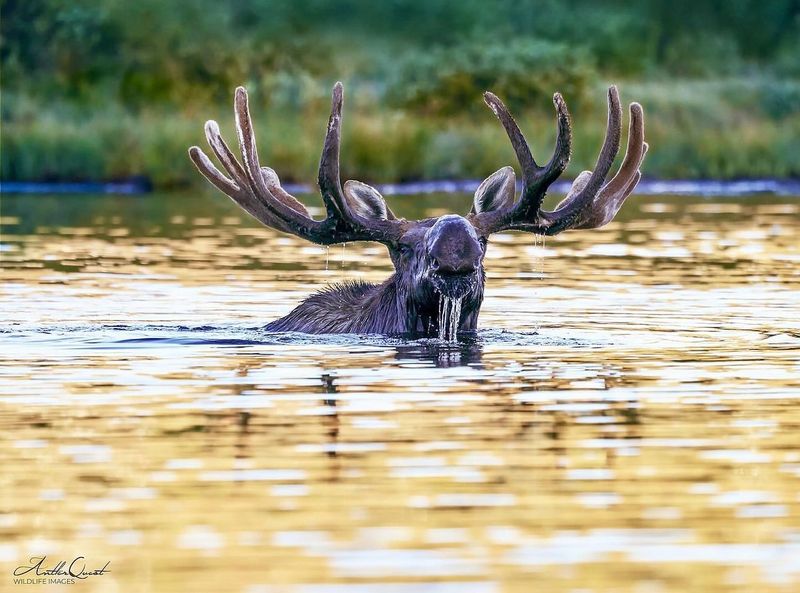
Moose are surprisingly adept swimmers, a skill not commonly associated with such large animals. They have the ability to swim long distances, sometimes over 10 miles at a stretch, demonstrating both endurance and strength. This capability allows them to access remote islands and cross rivers, expanding their range and exploring new territories.
Their large, powerful legs act as efficient paddles, propelling them through the water with ease. This swimming prowess is not just for exploration; it serves practical purposes as well. During hot summer months, swimming helps moose cool off and escape from biting insects that plague them on land.
Additionally, water bodies provide a plentiful source of food, as moose can dive up to 20 feet to reach aquatic plants. This ability to navigate and utilize water environments highlights their remarkable adaptability and resourcefulness in the wild.
5. Height And Size
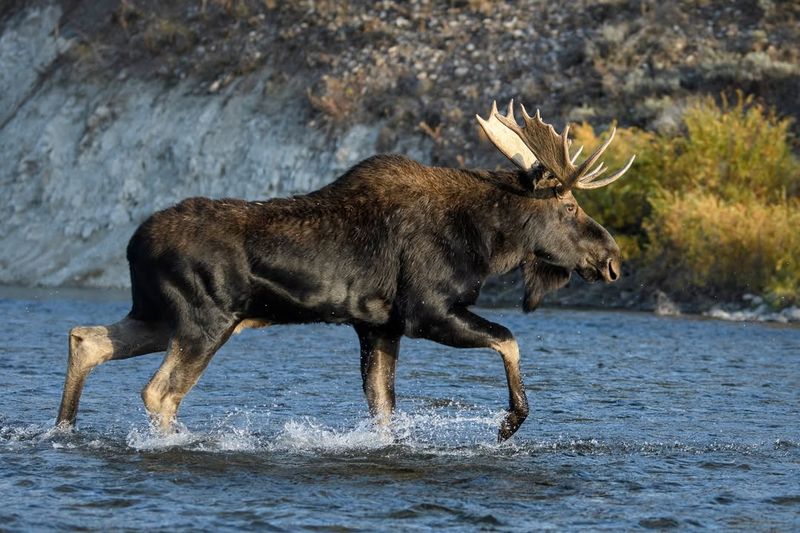
Towering over most animals in the forest, moose are the largest members of the deer family. Bulls can weigh up to 1,600 pounds and stand over six feet tall at the shoulder, making them an imposing presence in their natural habitat. This impressive size is not only a testament to their evolutionary success but also a crucial factor in their survival. Their height allows them to reach higher branches and foliage that smaller animals cannot access, providing a diverse diet essential for their nutritional needs.
This towering stature also serves as a deterrent to predators, as few can challenge such a formidable creature. Despite their size, moose are surprisingly agile, capable of moving swiftly through dense forests. Their long legs enable them to traverse rough terrain with ease, helping them escape threats and find food across vast landscapes.
This combination of size and agility embodies the unique characteristics that make moose such fascinating creatures.
6. Communicating With Calls
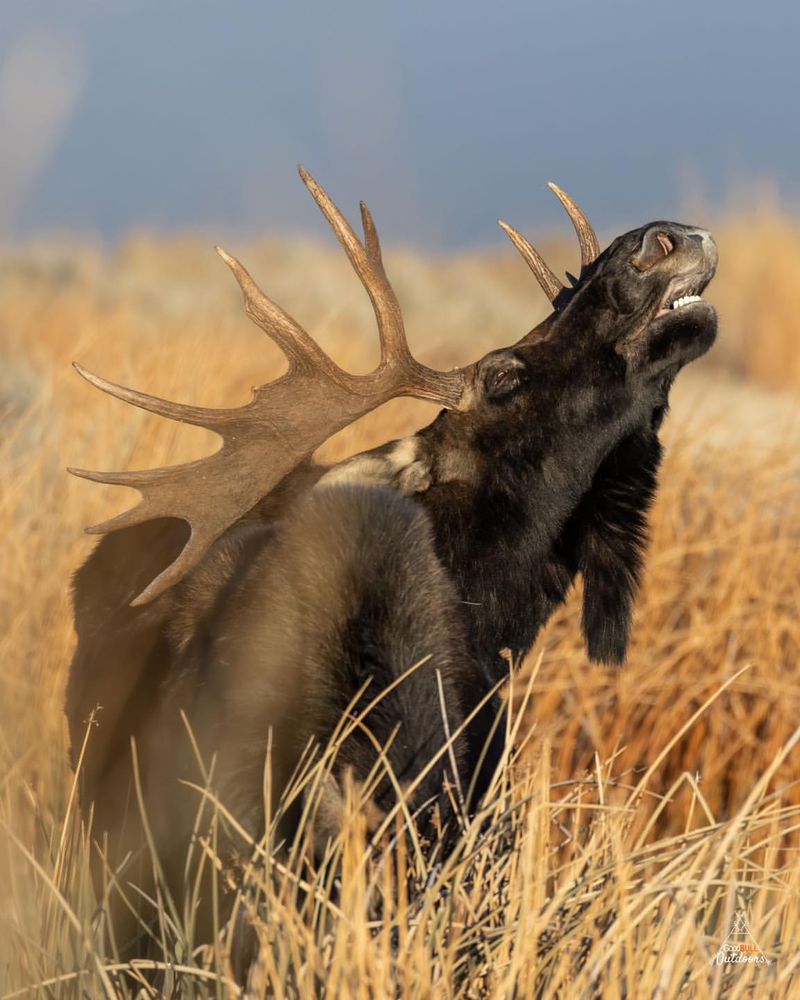
Moose communicate using a series of vocalizations, each serving a specific purpose in their interactions with others. These calls range from soft grunts to loud bellows, with each sound conveying different messages. During the mating season, bulls emit deep, resonant calls to attract females and assert dominance over rivals.
Calves, on the other hand, use high-pitched bleats to signal distress or call for their mothers. This communication is vital for their survival, ensuring that they remain close to their protective mothers in the dangerous wilderness. Moose vocalizations are not only used for mating or familial interactions; they also play a role in establishing territory.
By calling out, moose can assert their presence in an area, warning other moose to keep their distance. This auditory communication is a key aspect of their behavior, allowing them to navigate the complexities of their social and environmental interactions.
7. Moose In Mythology
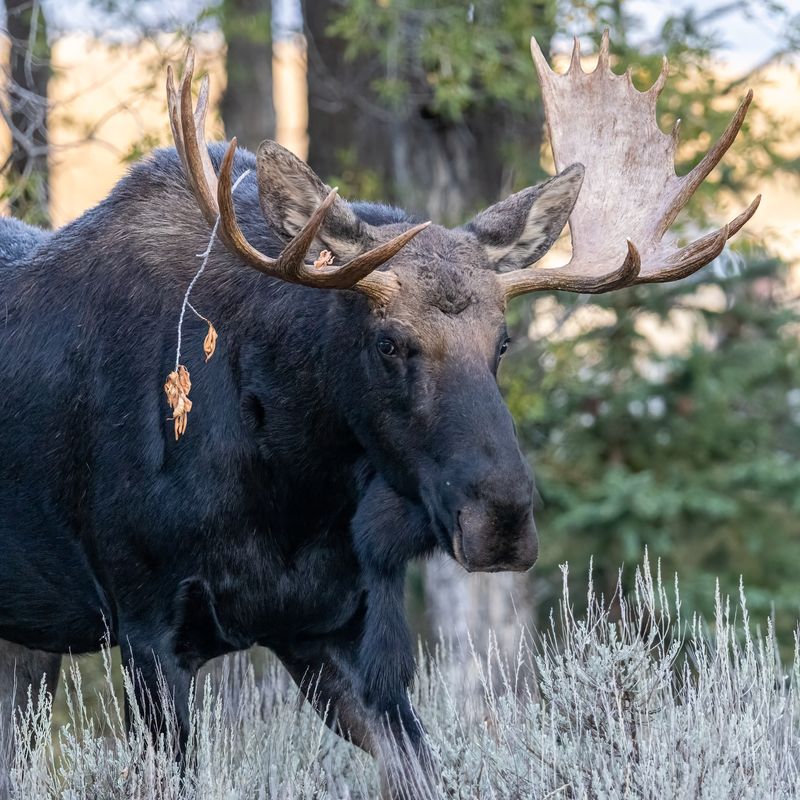
Throughout history, moose have featured prominently in the mythologies and folklore of various cultures. In Native American traditions, they often symbolize strength, survival, and adaptation, reflecting the qualities admired by those who lived harmoniously with nature.
These stories passed through generations, highlighting the moose’s role as a spiritual and cultural icon. In some European myths, moose were linked to the forest gods, seen as sacred creatures that roamed the magical woodlands. Their majestic antlers were believed to hold mystical powers, connecting the earth to the heavens.
Such tales enriched the cultural tapestry, offering lessons and insights into the natural world. Moose also appear in modern popular culture, often depicted humorously or as gentle giants. Their distinctive appearance and behaviors make them an enduring subject of fascination, inspiring artists, writers, and filmmakers.
This intertwining of myth and reality underscores the moose’s lasting impact on human imagination.
8. Camouflage Masters
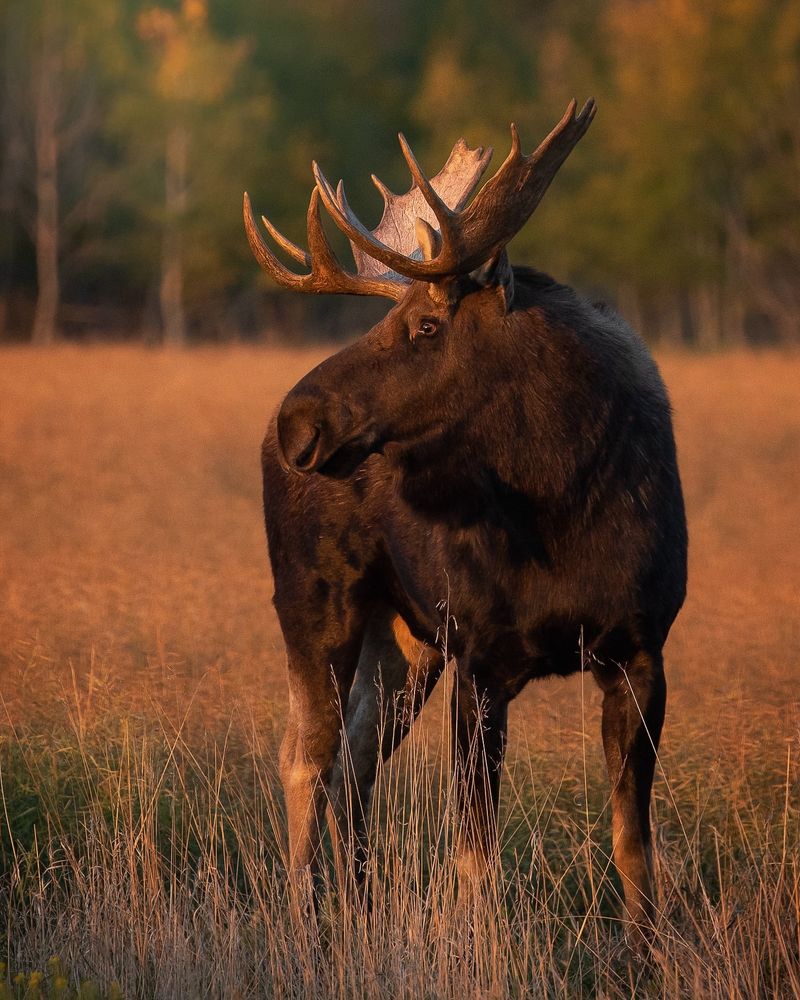
Despite their large size, moose are adept at blending into their surroundings, making them elusive creatures in the wild. Their fur provides excellent camouflage, changing with the seasons to match the environment. In winter, their coat becomes thicker and lighter, helping them merge with the snowy landscapes.
This natural disguise is crucial for avoiding predators, allowing them to move stealthily through the forests. The muted colors of their fur blend seamlessly with the earthy tones of the woods, providing an effective shield against detection. Camouflage is not only a defensive tactic but also aids in hunting for food.
By remaining unnoticed, moose can approach feeding grounds without startling other animals, ensuring a steady supply of nourishment. This ability to adapt visually to their environment highlights their survival skills and the intricate balance they maintain with nature.
9. Moose’s Keen Sense Of Smell
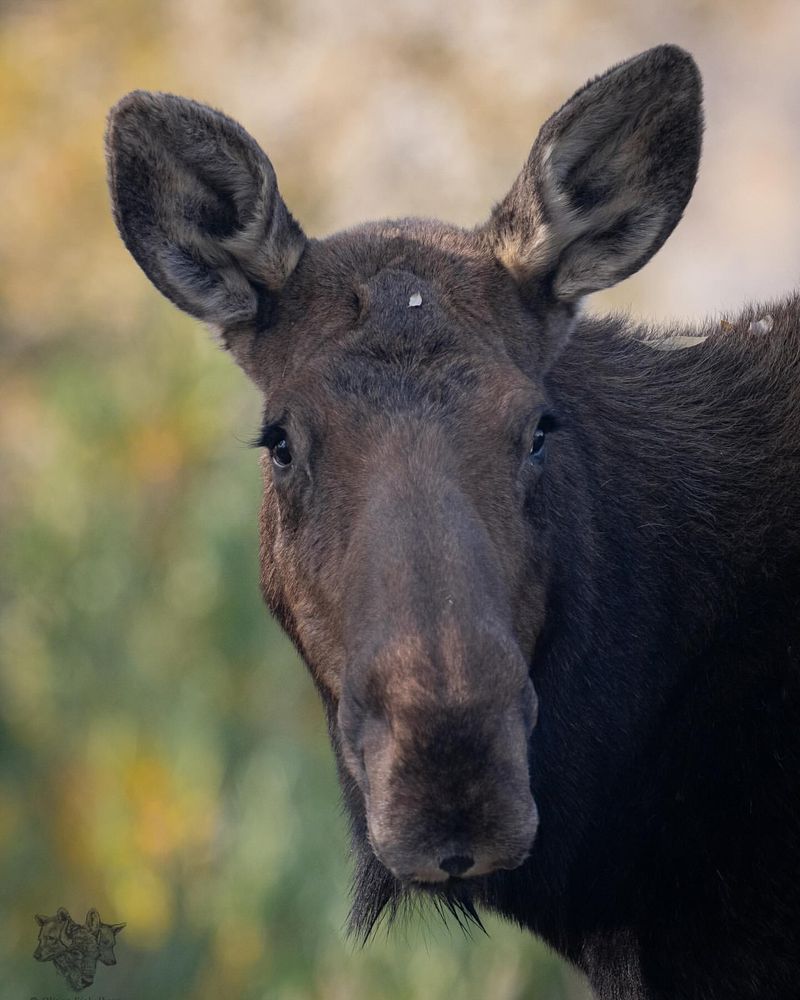
One of the most remarkable senses that moose possess is their keen sense of smell. This heightened olfactory ability plays a vital role in their survival, aiding them in detecting predators, finding food, and communicating with other moose. Their large, mobile noses are equipped with a vast array of scent receptors, making them incredibly sensitive to odors.
This acute sense allows moose to pick up on the faintest scents carried by the wind, alerting them to potential danger long before it arrives. It also assists them in locating food, even if it is hidden beneath layers of snow or vegetation. This capability ensures that moose can sustain themselves year-round, despite the challenges of their environment.
Furthermore, scent plays a crucial role in mating rituals, as moose can detect the pheromones of potential mates from great distances. This olfactory communication helps them find partners during the brief breeding season, contributing to the continuation of their species.
10. Moose’s Role In Ecosystems
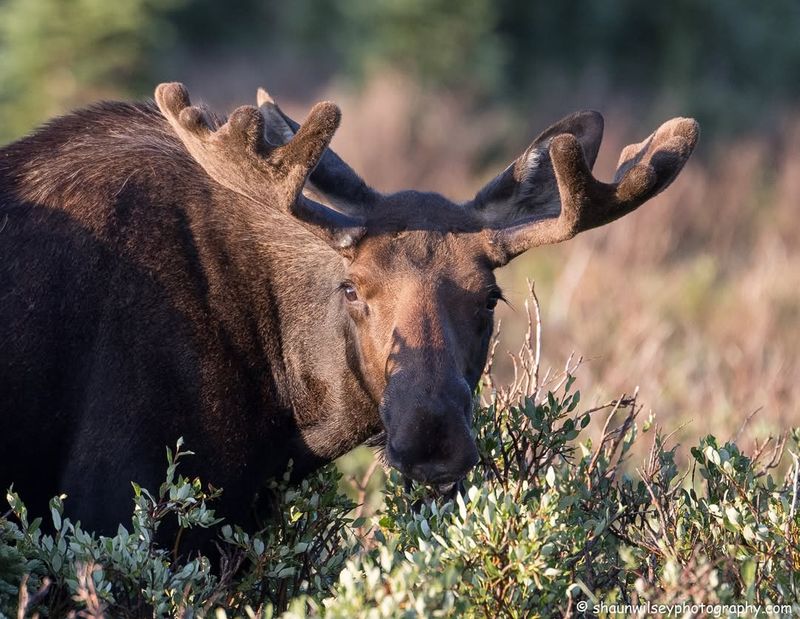
The presence of moose in an ecosystem has a profound impact on the environment and other wildlife. As large herbivores, they play a crucial role in shaping vegetation patterns, influencing the growth and distribution of plant species. By feeding on young trees and shrubs, moose can alter forest composition, promoting biodiversity by creating openings for other plants and animals.
Their browsing habits help maintain a balance between different plant species, preventing any single type from dominating the landscape. This ecological role supports various creatures, from insects to birds, that depend on diverse flora for their survival. Moose also contribute to nutrient cycling, as their waste enriches the soil, fostering healthy plant growth.
Additionally, moose serve as prey for predators like wolves and bears, supporting the food web and maintaining predator-prey dynamics. Their presence is indicative of a healthy ecosystem, reflecting the intricate connections between species and the environment. By understanding moose’s role in ecosystems, we gain insights into the delicate balance of nature.
11. Moose’s Silent Stride
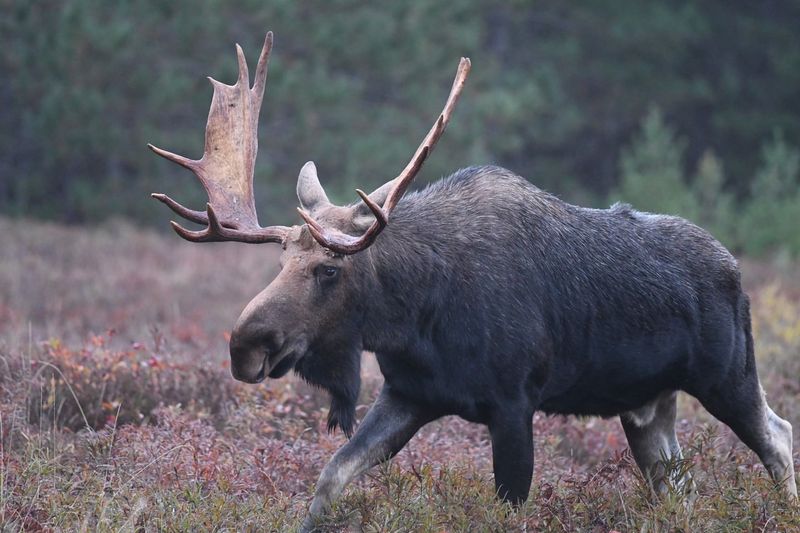
A remarkable trait of moose is their ability to move silently through the forest, despite their massive size. Their large, padded hooves aid in this stealthy movement, allowing them to traverse various terrains without making a sound. This silent stride is a critical adaptation for avoiding predators and approaching food sources undetected.
The shape and structure of their hooves are specifically designed to support their weight while minimizing noise. This allows moose to move gracefully, even in dense underbrush or over rocky ground. Their quiet movement is an essential survival skill, helping them navigate their often perilous environment with minimal disturbance.
This ability to remain silent also plays a role in their social interactions, as moose can approach potential mates or rivals without alerting them. The silent stride of moose is a testament to their evolutionary refinement, blending power with subtlety to thrive in the wild.
12. Moose’s Lifespan And Longevity
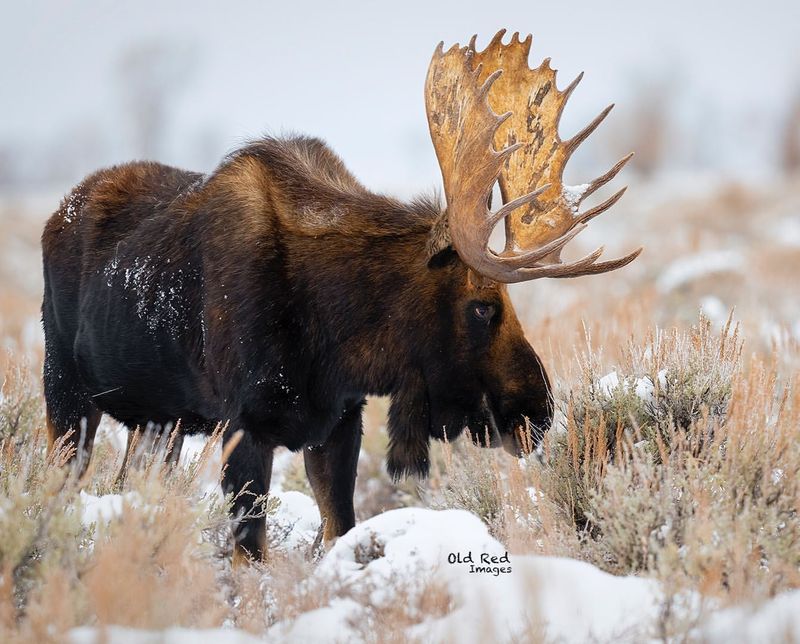
In the wild, moose can live up to 15 to 20 years, with their lifespan influenced by various factors such as predation, disease, and environmental conditions. Their longevity is a testament to their resilience and adaptability, allowing them to thrive in diverse habitats ranging from boreal forests to tundra landscapes.
The early years of a moose’s life are fraught with challenges, as young calves face threats from predators like wolves and bears. However, those that survive these early dangers grow into formidable adults, equipped with the skills and knowledge to navigate their environment. As moose age, their experience and instincts play a crucial role in their survival.
Older moose often develop strategies to avoid predators and efficiently find food, contributing to their extended lifespan. This longevity allows them to reproduce over several seasons, ensuring the continuity of their species and maintaining their presence in the ecosystem.
13. Moose’s Seasonal Migrations
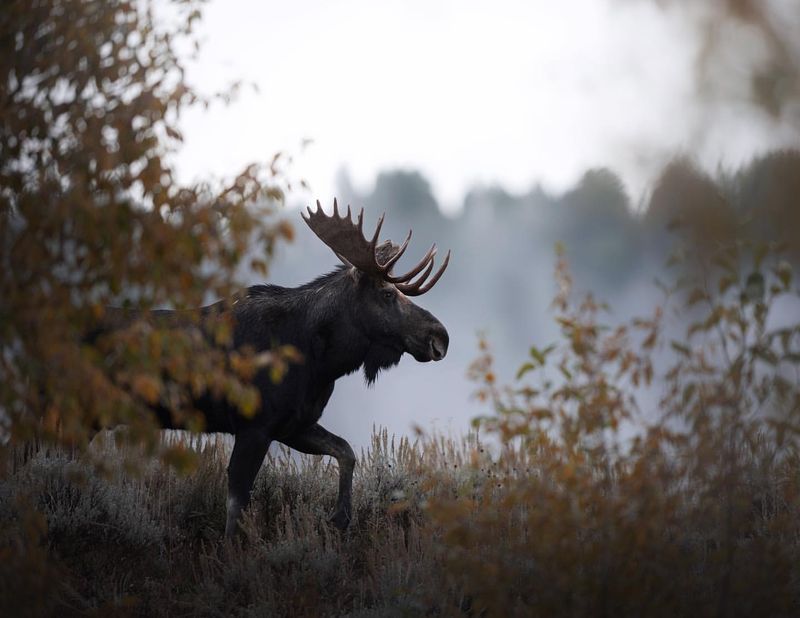
Moose exhibit seasonal migrations, moving between different habitats to access food and breeding grounds. These migrations are driven by environmental changes, such as temperature fluctuations and food availability, ensuring their survival throughout the year.
In the warmer months, moose often inhabit areas rich in vegetation, such as wetlands and forests, where they can find abundant food sources. As winter approaches, they migrate to more sheltered areas with less snow, allowing easier access to food and reducing energy expenditure.
These migrations are not only crucial for individual survival but also for the health of ecosystems. By moving between habitats, moose contribute to nutrient cycling and help maintain ecological balance.
Their seasonal movements reflect their adaptability and resilience, showcasing their ability to thrive in varying conditions.
14. Moose’s Protective Mothers
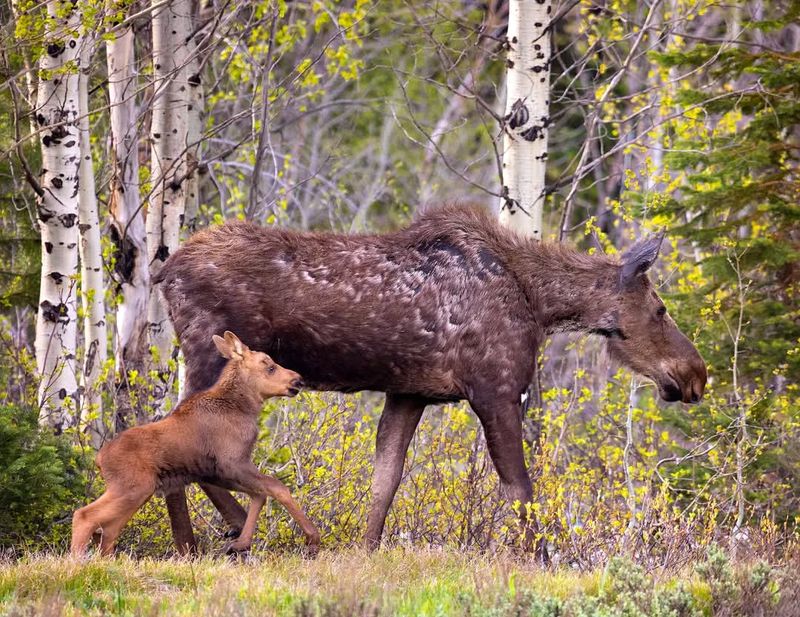
Mother moose are known for their fierce protective instincts, ensuring the safety and well-being of their calves. During the early months of a calf’s life, the mother remains vigilant, ready to defend against predators like wolves and bears. This maternal dedication is essential for the survival of the young moose, providing them with the best chance to grow and thrive.
Calves stay close to their mothers, learning essential survival skills and feeding on nutrient-rich milk. The mother teaches them how to find food, recognize danger, and navigate their environment, laying the foundation for a successful life in the wild.
The bond between mother and calf is strong, lasting for about a year until the calf is ready to venture out on its own. This period of maternal care is a critical phase in a moose’s life, highlighting the importance of family and the role of mothers in nurturing the next generation.
15. Moose’s Adaptation To Cold
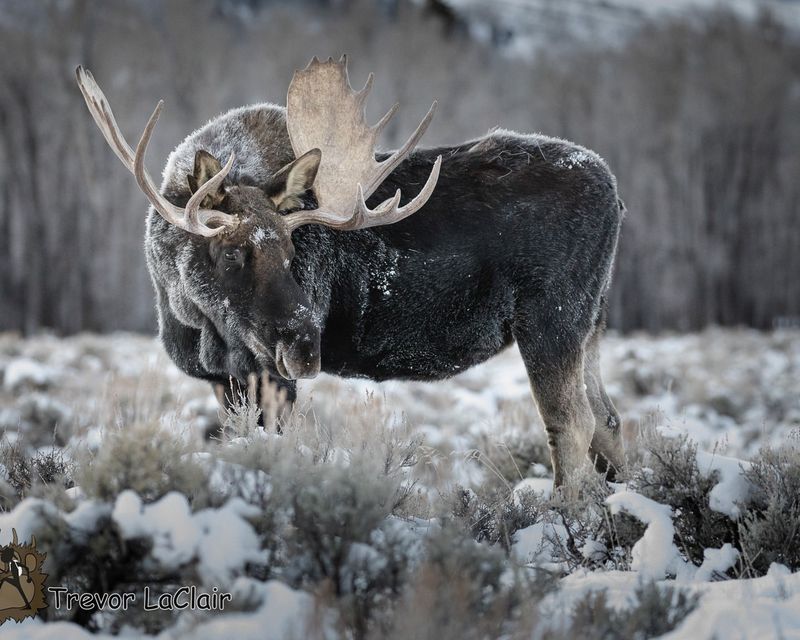
Moose are well-adapted to survive in cold climates, with physical features and behaviors that help them endure harsh winters. Their thick, insulating fur provides excellent protection against freezing temperatures, while their large bodies conserve heat and energy. In preparation for winter, moose increase their food intake during the warmer months, building up fat reserves to sustain them when food is scarce.
This adaptation is crucial for their survival, allowing them to maintain their strength and health throughout the challenging winter season. Moose also have specialized hooves that allow them to walk on snow more efficiently, distributing their weight and preventing them from sinking into deep snow.
This ability to navigate snowy landscapes ensures they can access food and avoid predators even in the most severe conditions. These adaptations are a testament to the resilience and ingenuity of moose, enabling them to thrive in some of the coldest regions on Earth.
16. Moose’s Impact On Human Culture
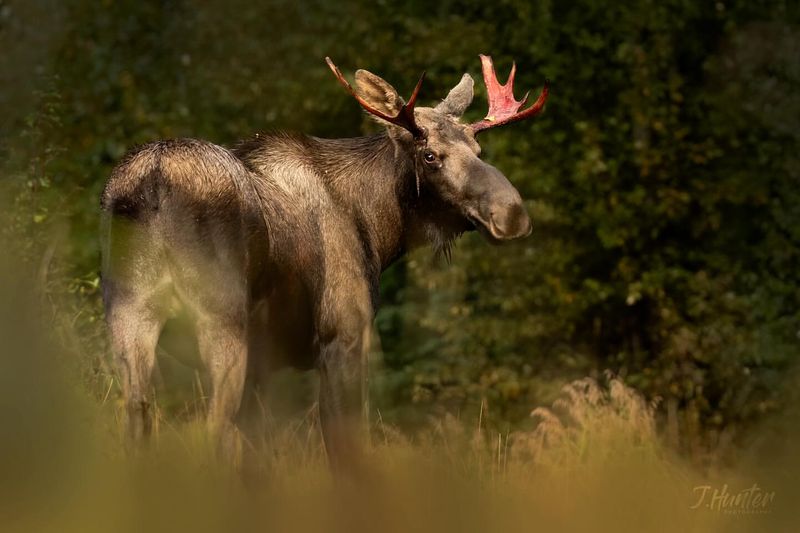
Moose have left an indelible mark on human culture, inspiring art, literature, and traditions across various regions. Their majestic presence and unique characteristics make them a popular subject in paintings, sculptures, and storytelling, capturing the imagination of people worldwide.
In North America, moose are often portrayed as symbols of wilderness and freedom, representing the untamed beauty of nature. This cultural significance is reflected in the names of places, sports teams, and even products, highlighting their prominent role in shaping regional identities.
Moose also feature in educational and conservation efforts, serving as charismatic ambassadors for wildlife protection. Their impact on human culture underscores the deep connection between people and nature, fostering appreciation and respect for these magnificent creatures.
By recognizing the cultural influence of moose, we celebrate their enduring presence in our lives and the natural world.

